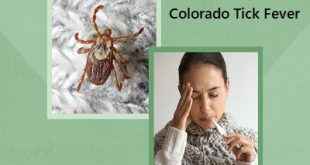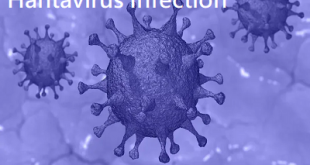What is the Zika Virus?
Zika virus is similar to dengue fever, yellow fever, and West Nile virus. Carried by infected Aedes aegypti mosquitos, Zika is largely transmitted through bites, but can also occur through intrauterine infection.
If a woman is bitten by an infected mosquito and becomes infected, Zika can cross into the placenta and affect the fetus. While anyone can contract Zika, pregnant women are the most at risk due to the potential for fetal microcephaly and other neurologic abnormalities. Sexual transmission of this virus can occur. The transmission has been reported from infected men and women to their sexual partners. The virus can be transmitted through anal, oral or vaginal sex.
How does Zika Virus transmit?
The zika virus can be transmitted in the following ways:
- Through the bite of an infected Aedes species mosquito
- Blood transfusion
- From a pregnant woman to her unborn child or the fetus
- Through sexual intercourse (including vaginal, anal, and also oral sex, and sharing of sex toys, between male-to-female, female-to-male, and male-to-male, sex partners. So far there are no confirmed cases of sexual transmission between female sex partners. The zika virus may or may not be transmitted through saliva while kissing. )
The zika virus gets transmitted to a human being by infected female Aedes aegypti and Aedes albopictus mosquitoes. After a mosquito bites an infected person, the zika virus enters the system of a mosquito, replicates in its body and spreads to its salivary glands. The virus incubates in the mosquito for eight to ten days.
Soon after, when the mosquito feeds on a person, the virus gets transmitted to the person. The incubation period of the zika virus in a person is about three to 12 days after the mosquito bite.
During this time the virus travels through his body and spreads to various glands in the body. It enters the bloodstream, and from there, into the nervous system.
Pathophysiology
Like many other flaviviruses, Zika virus is transmitted by an arthropod: the Aedes mosquito, including Aedes aegypti, Aedes africanus, Aedes luteocephalus, Aedes albopictus, Aedes vittatus, Aedes furcifer, Aedes hensilli, and Aedesapicoargenteus. Sexual transmission among humans has also been described.
Zika virus is well-adapted to grow in various hosts, ranging from arthropods to vertebrates. Viral attachment to unidentified cellular receptors is mediated by the E (envelope) glycoprotein. This is followed by endocytic uptake and then uncoating of the nucleocapsid and release of viral RNA into the cytoplasm. A viral polyprotein is produced and modified by the endoplasmic reticulum. Immature virions collect both in the endoplasmic reticulum and in secretory vesicles before being released.
Sirohi et al described the structure of the mature Zika virus based on cryoelectron microscopy. The virus resembles other known flavivirus structures with the exception of approximately 10 amino acids surrounding the Asn154 glycosylation site in each of the 180 envelope glycoproteins comprising the icosahedral shell, the carbohydrate moiety of which may be the attachment site of the virus to host cells.
Causes and Risks
The Zika virus is a member of the virus family Flaviviridae and is closely related to other mosquito-borne diseases such as dengue fever and yellow fever. It is passed in one of three ways:
- By a mosquito bite from the Aedes aegypti mosquito
- During pregnancy when it is passed from an infected mother to her unborn baby
- During unprotected oral, vaginal, or anal sex
It is also possible, but not confirmed, that the virus can be transmitted through breast milk.
It only takes one bite to become infected.
In terms of sexual transmission, the virus is able to persist in semen where it is less able to do so in saliva or vaginal secretions. As such, Zika is more commonly passed from man to woman rather than the other way around.
Symptoms of Zika virus infection
Most people have minimal symptoms or no symptoms. If symptoms do occur, they’re usually mild and last around 2 to 7 days.
Commonly reported symptoms to include:
- A rash
- Itching all over the body
- A high temperature
- A headache
- Joint pain (with possible swelling, mainly in the smaller joints of the hands and feet)
- Muscle pain
- Red eyes (conjunctivitis)
- Lower back pain
- Pain behind the eyes
Possible complications
Although most people recover with no complications, Zika virus infection in a pregnant woman can pose significant risks to the unborn baby, even if the woman does not develop any symptoms. Zika virus can cause serious birth defects including microcephaly (an abnormally small head), brain abnormalities, vision and hearing loss, and more. When some of these birth defects are present together, the condition is called congenital Zika syndrome (CZS).
There have also been increased reports of a serious nervous system disorder in adults, called Guillain-Barré syndrome (GBS) following infection with Zika virus. Symptoms of GBS include:
- The weakness of the arms and legs
- Weakness or paralysis of the muscles that control breathing
Symptoms of GBS can last a few weeks to several months. Most people fully recover but some people have permanent nervous system damage; very few people die from GBS.
There have also been rare case reports of other nervous system conditions affecting the nerves, spinal cord and brain in children and adults.
A small number of deaths associated with Zika virus infection have been reported. These have been seen in:
- Infants with severe birth defects
- Children and adults with underlying health conditions that weaken their immune system (reduce their ability to fight disease)
Diagnosis of zika virus
A Zika infection can be diagnosed by a doctor with tests that can either directly detect the organism or indirectly confirm evidence of infection. The testing procedure can vary but usually involves two separate tests used in tandem:
- Nucleic acid testing (NAT) is used to detect genetic evidence of the Zika virus. The NAT test would be performed concurrently on both a blood and urine sample.
- Immunoglobulin M (IgM) testing is used to detect proteins, known as antibodies, that are produced by the body in response to the Zika infection. The test is blood-based and usually able to detect antibodies within four days of the appearance of symptoms.
Testing Recommendations
While the diagnosis of a Zika infection is relatively simple, it is not for everyone. Testing is currently recommended for the following at-risk groups only:
- Any symptomatic person believed to be exposed to the virus either through unprotected sex or recent travel to a region where Zika is endemic
- Any pregnant woman believed to be exposed to the virus either due to recent travel to an endemic region or unprotected sex with a person who recently returned from an endemic region
Treatment for zika virus
Currently, there is no treatment for Zika.
A person with symptoms should:
- Rest
- Increase fluid intake to prevent dehydration
- Take over-the-counter (OTC) pain killers to relieve pain and fever
The CDC advises against using aspirin or other non-steroidal anti-inflammatory drugs (NSAIDs) until a diagnosis of dengue has been ruled out in those at risk due to the risk of hemorrhage.
The CDC also advise that pregnant women who are diagnosed with Zika should be considered for the monitoring of fetal growth and anatomy program every 3 to 4 weeks.
They also recommend seeing a doctor who specializes in pregnancy management and either infectious disease or maternal-fetal medicine.
How to prevent Zika Virus?
While the Zika virus usually only causes mild, self-limiting illness, the transmission of the virus during pregnancy can be serious and lead to a rare birth defect known as microcephaly. Because there is neither a vaccine nor treatment for the Zika virus, the only way to prevent infection is to avoid mosquito bites if traveling to or living in an area where the Zika risk is high.
Moreover, if you are in those areas while you are pregnant, you would need to either use condoms every time you have sex or abstain from sex until your doctor tells you otherwise.
Prevent mosquito bites
- Choose an EPA‐registered insect repellent with one of the following active ingredients: DEET, picaridin, IR3535, oil of lemon eucalyptus or para-menthane-diol, or 2-undecanoate, and use the repellent according to the product label. When used as directed, EPA-registered insect repellents are proven safe and effective even for pregnant and breastfeeding women.
- Use the repellent day and night because the mosquitoes that transmit Zika virus bite during the day, but will also enter buildings and bite at night.
- Use permethrin‐treated clothing.
- Cover exposed skin by wearing long sleeves, socks, pants, and hats.
- Sleep indoors in rooms with screened windows or air‐conditioning, or use a bed net if you sleep in a room that is exposed to the outdoors.
Preventing Sexual Exposure
Avoiding Zika during pregnancy requires a two-prong approach: preventing mosquito bites and avoiding exposure during oral, vaginal, or anal sex.3
If you are pregnant, it is best to avoid traveling to countries where the virus is endemic. If your partner has just returned from such an area, there are several things you both can do to protect yourself.
Preventing Blood Exposure
While there have been several cases in Brazil where the Zika virus has been passed through a blood transfusion, the risk is considered low. While research is ongoing, current evidence suggests that the virus is less able to persist in blood and will likely clear within 13 days.6
Newly implemented guidelines by the U.S. Food and Drug Administration further reduces the risk by routinely screening blood donations and removing any which tests positive for the Zika virus from the blood supply.
If this doesn’t offer you enough assurance, you can make an autologous donation by which you donate blood for yourself prior to surgery or planned medical procedure. Autologous donations require a doctor’s prescription. Contact your provider to find out if you are eligible to make such a donation.
 Diseases Treatments Dictionary This is complete solution to read all diseases treatments Which covers Prevention, Causes, Symptoms, Medical Terms, Drugs, Prescription, Natural Remedies with cures and Treatments. Most of the common diseases were listed in names, split with categories.
Diseases Treatments Dictionary This is complete solution to read all diseases treatments Which covers Prevention, Causes, Symptoms, Medical Terms, Drugs, Prescription, Natural Remedies with cures and Treatments. Most of the common diseases were listed in names, split with categories.








thank you, we get more knowledge about Zika virus, it is dangerous same like AIDS.